
| Summary : |
![]()
Presentation :
OCZ PC4300 EB Platinium
Very similar in their presentation to the Corsair modules, OCZ’s new DDR2 sticks are also provided in a traditional plastic blister pack.
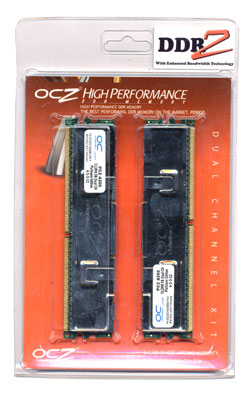 |
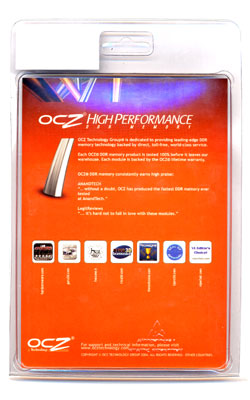 |
One finds on the back the different "Awards" from web sites, just like on Corsair’s packaging. The similarities of packing between the two brands seem obvious here. On the other hand, OCZ includes neither a sticker nor an installation guide. That said, considering the expert public for which these modules are intended, it is clearly not a priority. Let’s see the physical appearance of the modules:
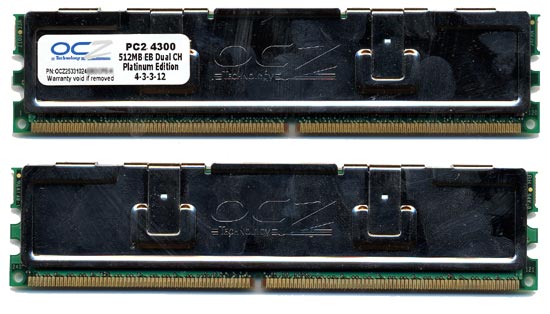
In short, very traditional, which have already proved reliable, the heat spreaders are made of copper and are therefore appreciably heavy. If OCZ encountered big availability problems with their preceding “EB” modules (which were never distributed in France, nor in many other countries), let us hope that they will become available in the various shops of the territory. Especially dedicated and tested for Dual Channel use, these 512MB modules belong to the "Platinum Edition" line. Available in 256MB and 512MB modules, as well as in Dual Channel kits of 512MB and 1GB, these sticks are specified with timings of 4-3-3-12, which is lower than most of the other sticks.
Contrary to the others, the OCZ 512MB module is a single sided module!
This suggests the possibility of 1GB modules and 2GB Dual Channel kits
in the short-term. Let’s now move on to a revelation on the famous
“Enhanced Bandwidth” Technology...
- Enhanced Bandwidth Technology ?!
It seems to us that OCZ’s Enhanced Bandwidth technology is nothing more than an optimization of the SPD of the modules. So the physical module is identical and only some bits are modified in the EEPROM of the SPD. So we downloaded the contents of the SPD from OCZ’s Enhanced Bandwidth module, and also of the module which physically resembles it, i.e. a Kingston module with Elpida chips (see below):
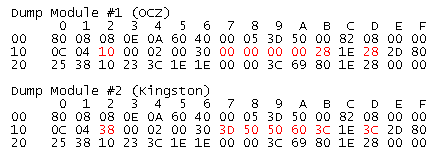
The bytes that differ are in red. Strangely, the SPD is exactly identical, except for the bytes defining the basic timings. Indeed, Kingston is set to 4-4-4-12 while the OCZ is specified at 4-3-3-12. Skeptics, we ran various tests with strictly the same hardware configuration, in 4-4-4-12 mode. Our results:

These results were obtained under mbench, wstream and UT2003. As you can see, *NO* difference exists between the results of the two modules in the various tests! What happened to OCZ’s “Enhanced Bandwidth” technology??? After having studied the SPD and the performance, the only thing that still could have been modified by OCZ was the PCB. So we managed to remove the copper heat spreaders without damaging the module:
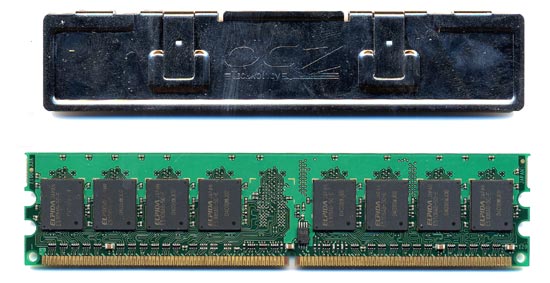
And, surprisingly, a very strong feeling of déjà vu with other modules that we’re testing in this roundup, Kingston Value:
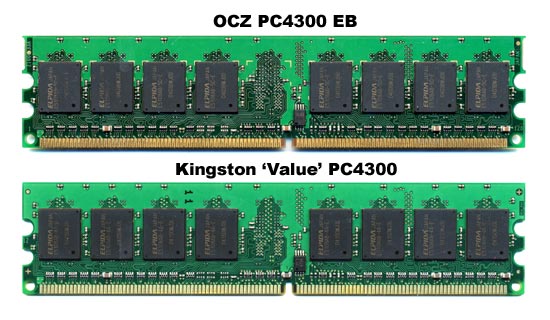
In short, a very close resemblance. In fact, these modules are exactly identical. We tried a zoom on the center section:
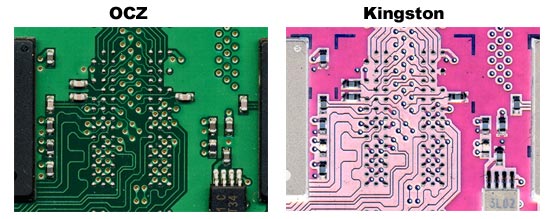
The pink color of the Kingston module comes from a Photoshop filter (melted by exclusion). We now will superimpose the two images and the differences will appear pink:
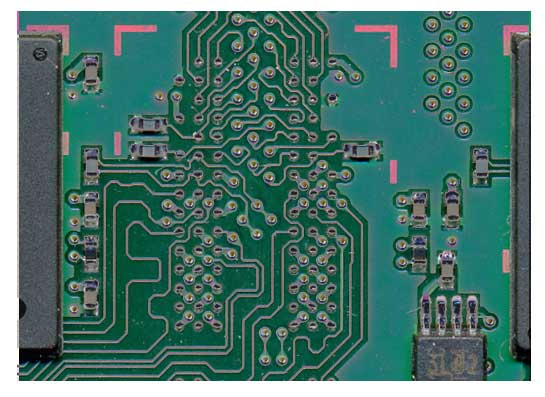
As you can see, aside from the markings on the chips, absolutely no difference exists between the two modules, proof that they were manufactured at the same place. For those who would still doubt, we carried out the same operation on the two sides of the module:
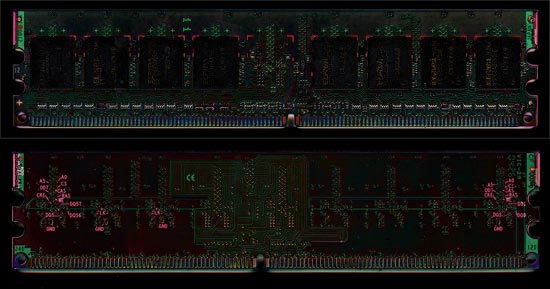
We also hold a very high resolution 40MB psd version ready to support all these findings. In short, same SPD, same PCB, same chips, same performance, one wonders exactly what differentiates the OCZ modules from the Kingston modules. If you could imagine that these OCZ modules are nothing more than specially selected Kingston sticks, you would obviously wonder what is the significance of the famous “Enhanced Bandwidth” technology. Until proof to the contrary, this one seems to be an argument based purely on marketing wind. Shame.